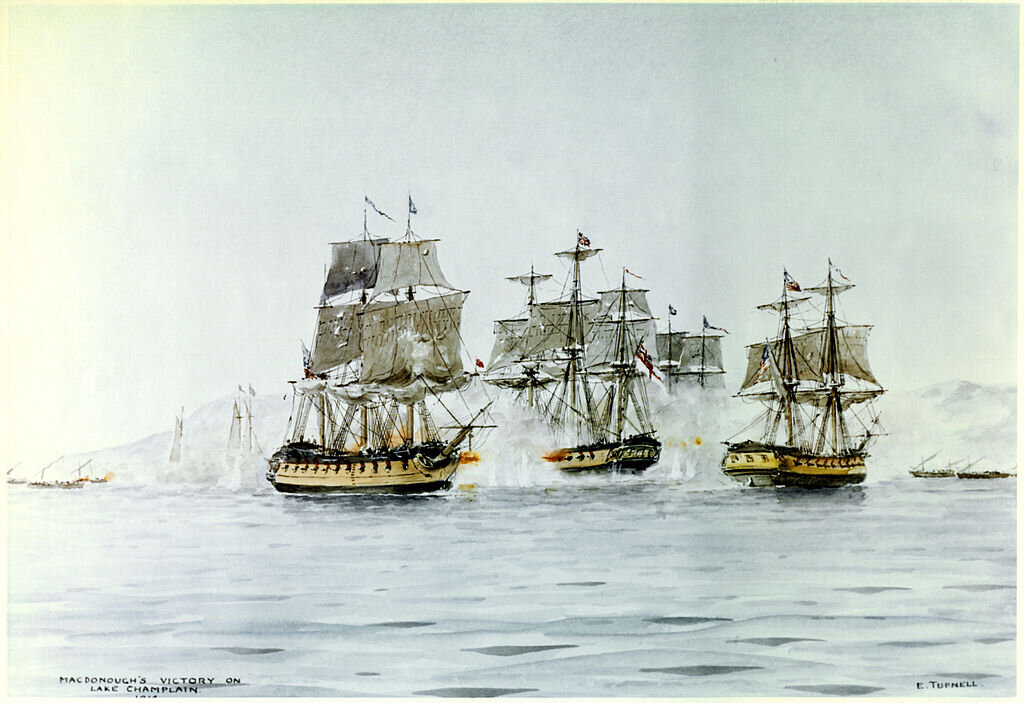Queen Victoria is one of the most famous monarchs in history. Her reign of 63 years was the longest in the history of the United Kingdom until Queen Elizabeth II surpassed her, reigning 68 years and counting. Her name is synonymous with an entire time period. Surely there was never an individual that made such an impact on a country, if not the world.
But what if that had never happened? What if she never came to the throne? What if the original heir presumptive had lived to take the throne? And most importantly, how would the world have been different? This is an examination of those scenarios and how one death changed the entire world.
In part one (here) we discussed the tragic death of Charlotte, Princess of Wales, and her stillborn son. Her death had major ramifications on the royal succession. In part two we look at the sons of George III who all found themselves suddenly in need of wives in order to continue the Hanover line.
Denise Tubbs explains.
George III in the 1770s. Painting by Johann Zoffany.
Great Britain has had its share to succession crises over the centuries. The legitimacy of Edward IV’s marriage to Elizabeth Woodville and their subsequent children has been debated for over 500 years. During the reign of Elizabeth I, succession was a huge topic since she refused to marry. Even spanning back to 1066, the Battle of Hastings between William of Normandy and Harold Godwinson started as a result of a succession crisis. So, what is it about this crisis that separates it from the rest? Well, no other royal house had more effect on world events for the next 100 years.
George III had a lot of kids. A total of 15 children - nine sons and six girls. Of his daughters, two never had children, two were never married, one died in childhood, and the last had no surviving children. The continuation of the house of Hanover lied solely with his sons. His son the future George IV and Ernest Augustus both had only one child. Ernest Augustus had a son days apart from Victoria, missing the title of heir by a mere three days (Victoria was born on May 24, 1819 and George was born on May 27, 1819). The future William IV had a total of 10 children. Unfortunately, none of those 10 were legitimate. Prince Augustus Frederick had three children from his marriage; however, because he got married in secret and without the permission of his father, all were deemed illegitimate. Prince Frederick married, but had no children. Prince Adolphus has children but not until after the births of Victoria and Prince George. Lastly, Prince Edward had one child with Princess Victoria of Saxe-Coburg Saalfeld (she was the sister of Prince Leopold, Charlotte’s husband) before dying at the age of 52. This child was Victoria.
The line of succession
Since George IV was the oldest son and heir apparent to his father’s throne, that made his heir Charlotte. But when she died in 1817, the new heir apparent would have been the second oldest son of George III, Prince Fredrick. He would die in 1827, so the heir became the third oldest son of George III, William. At the time of Charlotte’s death William, Edward and Adolphus were not married. Ernest Augustus had married two years prior. All three unmarried princes were pressured by the public to do away with their bachelor life, marry and have a child before the line had no one left. The three of them would get married in rapid succession of each other - all getting married in 1818.
So, let us recap since this was a lot of information. By 1817, George lost his only child and heir in childbirth, Charlotte. At the time of her death, William, Edward, and Adolphus were not married nor had any legitimate children. Ernest Augustus was married but had no children yet. Frederick was married but with no children. Augustus had children but they were ruled illegitimate. If William became king after George IV, and none of the remaining sons got married, William’s heir would be Ernest Augustus (Edward would be dead by 1820, so he and Frederick will be out of contention). Ernest Augustus had a son in 1819, so the throne would have passed to him next. If his son had no heir and the remaining sons were still alive the succession would have passed to Augustus and Adolphus. The line would die after Adolphus.
This meant that the first son to have a child would be the father of the future of the country. The game is set, and as mentioned above, Victoria is born three days before her first Cousin George of Hanover in 1819. If Charlotte had not died in childbirth, there would have been no need for those three sons to make their rush to the altar. Victoria, as a result, would not have been born and her direct descendants who had a major effect on world history as we know it today would be drastically altered. Furthermore, even with Charlotte’s, if Victoria was born after George of Hanover she also would not have been in direct line to the throne. There are then two what if possibilities: of Victoria never being born or born after her cousin.
Next up we will look at the children of Victoria and the effect they would have on world events.
Now, read part 3, the final part, here: What if Queen Victoria never made it to the Throne? Part 3 – The Impact of Queen Victoria on Europe
What do you think of this royal succession? Let us know below.
Sources
Wikipedia
PBS drama Victoria
















